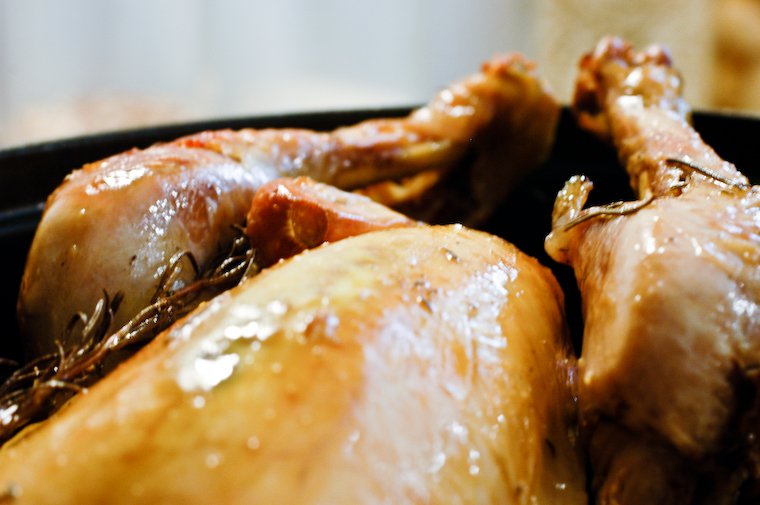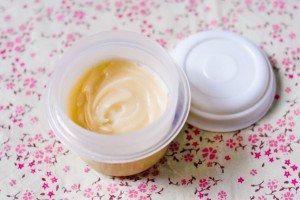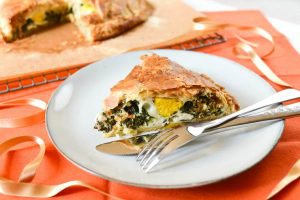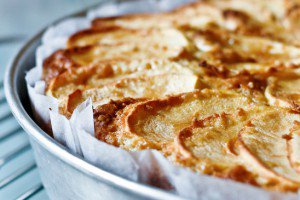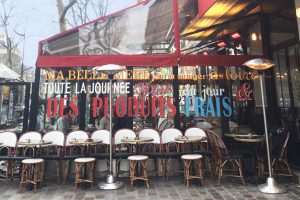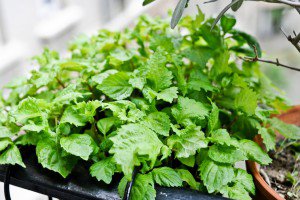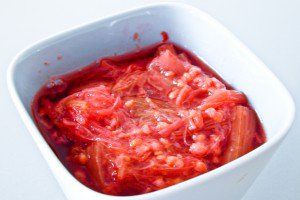Cookbook writing guidelines tell you that naming a recipe after someone is not a good idea: it doesn’t tell the reader much about the ingredients or the process, the reader doesn’t know this person, and frankly, the reader doesn’t care. This is all true of course, but I have a certain fondness for those recipes that sound like they were found in some old handwritten recipe book — la Carpe farcie façon Hortense, le Boudin du Père Thibault, le Pain d’épices de Célestine* — and although I promise not to make it a habit, I really wanted to name this particular dish after the person who inspired it.
A few weeks ago, Maxence and I spent a glorious day visiting friends of his mother’s in the Perche region, a two-hour drive to the south-west of Paris (less if you’re the speeding type). Le Perche is the essence of the French countryside — I’m pretty sure it is what the language guys had in mind when they invented the word “picturesque” — and as soon as we got off the freeway and started driving through the bocage (hedged farmland), I could feel my shoulders relaxing and my breaths deepening.
Muriel had slow-baked the chicken in one of those clay pots from Alsace and Germany called a Römertopf with whole garlic cloves, a quartered lemon, and fresh herbs from the garden.
Our hosts welcomed us warmly into their beautiful house — I want one just like that when I grow up — and a simple glance around the kitchen made me feel confident that lunchtime would bring very good things. And indeed, after a salad of perfect tomatoes from the vegetable patch (oh, the joy of living a cliché), we dug into the centerpiece of the meal: a farm-raised chicken so big it could have easily been admitted into some select turkey association.
The chicken came from a nearby farm, where one buys the chicks at birth and pays for their food, lodging, and education until they are plump enough to return the favor, at least for the food part. Muriel, the lady of the house, had slow-baked it in one of those clay pots from Alsace and Germany called Römertopf with whole garlic cloves, a quartered lemon, and fresh herbs from the garden.
Maxence took care of the carving (he seems to be the appointed chicken carver wherever we go, it is such a useful skill to possess) and the platter of chicken parts was brought to the garden table with sides of mashed potatoes and green beans, and a saucière (gravy boat) of golden brown cooking juices, in which the softened garlic cloves were paddling about, ready to have their pungent-sweet pulp smooched out and used as a condiment.
That chicken was hands-down the best I’ve ever had. Muriel was happy to share the recipe, and I soon reproduced it with my very own larger-than-life chicken bought from the farmers’ market, an organic lemon, pink garlic, and herbs that Muriel had snipped for us to take home (along with a few ceps, a crate of tomatoes, and a bushel of plums from their overloaded tree). I don’t own a clay pot yet — rest assured this will be fixed on my next trip to Alsace — so I used the largest of my cast-iron cocottes instead.
I have trouble deciding whether my chicken was as stupendous as Muriel’s — a dish that someone else has made for you always feels more magical — but it was pretty close, and I have a feeling that le poulet de Muriel will make frequent appearances on our menu. It is an extremely easy and foolproof recipe (since the chicken cooks in its own steam and at such a low temperature, there is no risk of it overcooking or drying out) and all you really need is good ingredients and time.
* These recipes are quoted from a book called Recettes gourmandes du Poitou-Charentes by Francis Lucquiaud, a collection of the author’s grandmothers’ recipes.

Have you tried this? Share your pics on Instagram!
Please tag your pictures with #cnzrecipes. I'll share my favorites!
Ingredients
- 1 large free-range chicken, about 2 kilos (4 pounds)
- 1 tablespoon olive oil
- Fine sea salt, freshly ground pepper
- 1 large head garlic
- 1 organic lemon, cut in four quarters
- 4 sprigs of fresh thyme
- 2 sprigs of fresh rosemary
Instructions
- Rub the skin of the chicken with olive oil, sprinkle it with salt and pepper on all sides, tie the legs together, and place the animal, breasts-side up, in a clay pot or cast-iron cocotte large enough to accommodate it.
- Peel the outer layers off the head of garlic to separate the individual cloves -- don't peel the cloves themselves. Arrange the garlic, lemon, and herbs around the chicken.
- Put the lid on, slip the pot in the cold (not preheated) oven, and turn the oven on to 150°C (300°F).
- Bake for three hours, or until cooked through (if you have a meat thermometer, insert it in the inner part of a thigh: the chicken is done when the thermometer registers 82°C / 180°F), basting the chicken with its own juices every 45 minutes or so.
- If the skin of the chicken is still rather pale, remove the lid, turn the oven up to 220°C (440°F) or switch to the grill mode, and put the pot back in for 20 to 30 minutes, watching it closely, until the chicken is nicely golden.
- Transfer the chicken to a cutting board, carve the different serving parts, and transfer to a warm serving dish (pour very hot water from the kettle into it and let stand as you cut the chicken).
- Transfer the juices, herbs, and cloves to a gravy boat, and serve immediately, with green beans and mashed potatoes.


